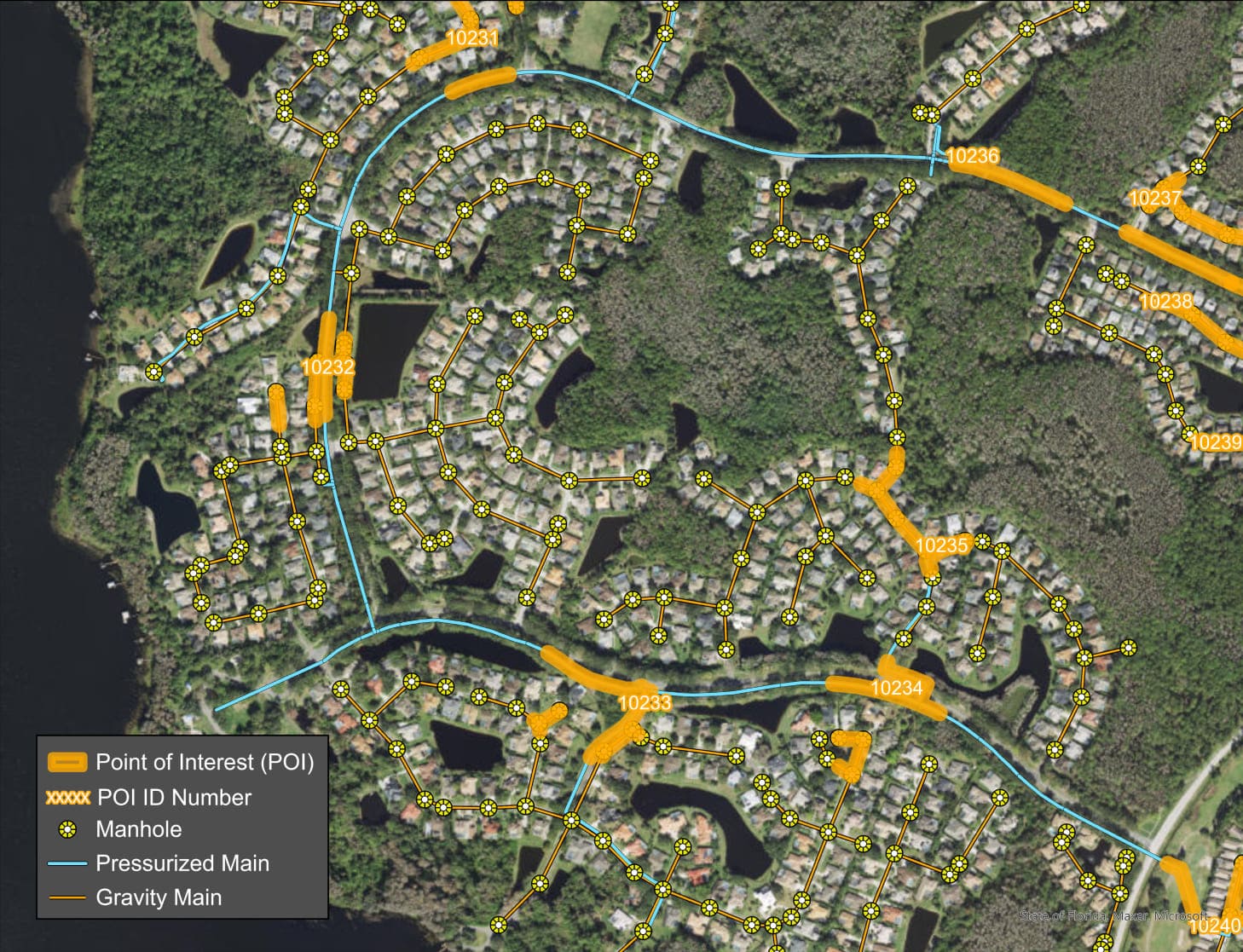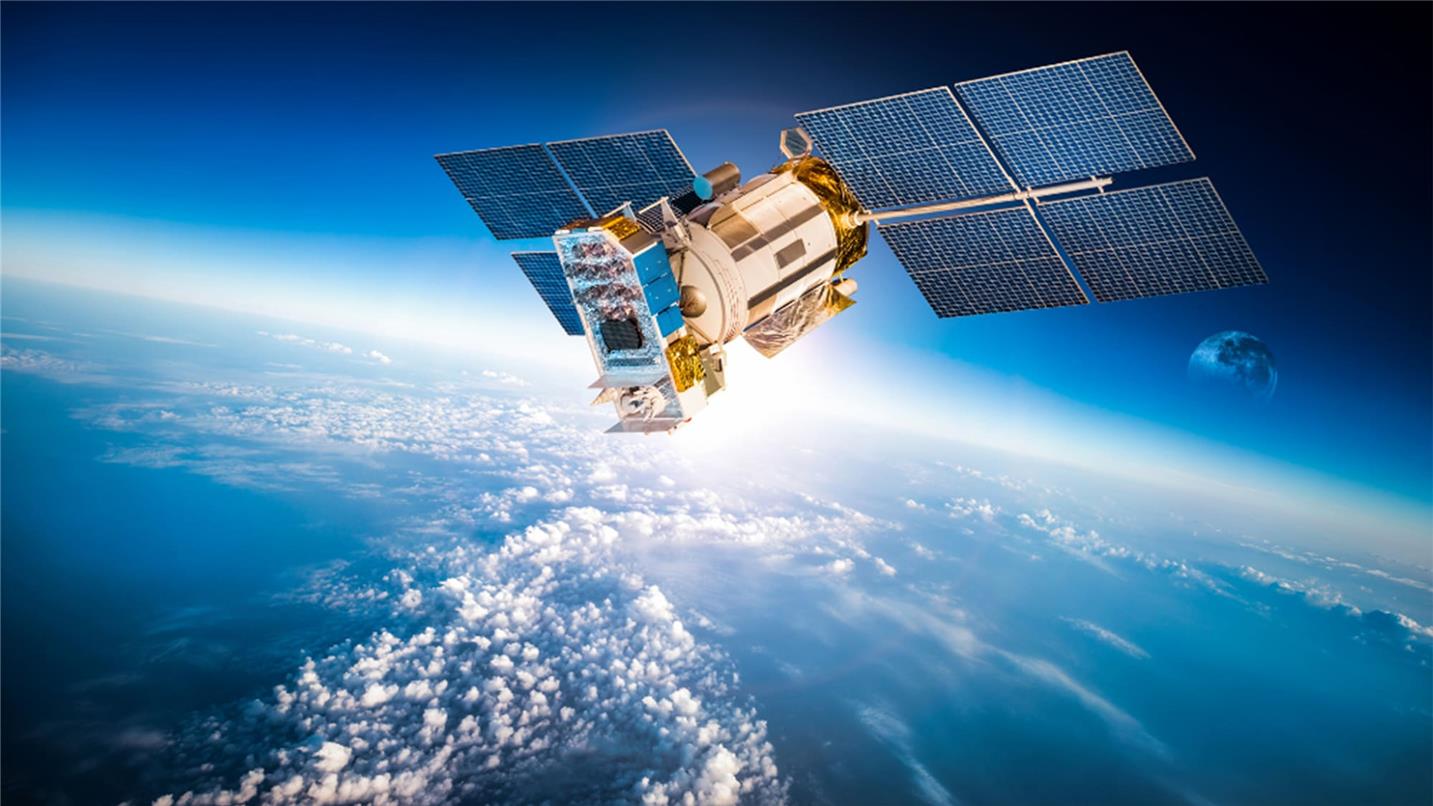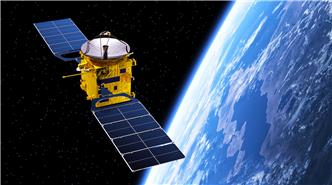The need for wastewater network surveillance
Effective wastewater network surveillance is crucial for multiple reasons. Firstly, it helps mitigate the environmental impact by identifying and addressing issues such as groundwater contamination and effluent leaks promptly. Secondly, the rising concerns expressed by utilities, authorities, and the general public underscore the need for vigilant monitoring to ensure water quality and sustainability. Lastly, the potential consequences of fines and lawsuits make surveillance indispensable for compliance with regulations.
Challenges in wastewater network management
Water utilities face certain areas of concern in terms of wastewater network management. Here are some of the top ones:
Infiltration
Infiltration occurs when water seeps into the sewer system from the surrounding soil and groundwater, especially in zones with a high groundwater level. It commonly occurs during wet weather, leading to increased wastewater overflow. Infiltration not only increases load on sewage treatment plants, it can also contribute to sewer overflows and lead to potential public health risk during storm events.
Exfiltration
Typically occurring during dry weather conditions, exfiltration refers to leakage of wastewater from the sewer system into the surrounding soil or groundwater. This can result in the loss of treated wastewater, reduced system efficiency, and potential groundwater contamination.
Combined Sewer Overflows
Combined Sewer Overflows, or CSOs, are common in older urban areas with combined sewer systems for sewage and stormwater. During periods of heavy downpour, the system can become overwhelmed, causing a mixture of untreated sewage and stormwater to overflow into water bodies. Leaks in the pipe network can result in infiltration, which causes additional strain to the system. If left unresolved, CSOs can result in water pollution, environmental damage, and potential health hazards.
Other complications
Wastewater pipeline leakage is an emerging concern in Europe, compounded by the increasing volume of wastewater generated by increasing population densities in many cities. Here are other challenges:
Ageing pipelines
Ageing wastewater infrastructure is one of the biggest causes of leakage in the region. Over time, cracks and joint faults develop in underground sewerage network due to a variety of physical, environmental, and operational issues that ultimately create issues.
Climate change
Climate change accelerates network deterioration, leading to more surface water overflows and sewer flooding, a significant service failure. It also intensifies the environmental damage caused by untreated wastewater overflows. For example, fluctuations in temperatures cause pipes to expand, contract, and shift. This, combined with freezing and contracting ground movements, increases the risk of leaks, cracks, and bursts.
Infiltration
Infiltration occurs when water seeps into the sewer system from the surrounding soil and groundwater, especially in zones with a high groundwater level. It commonly occurs during wet weather, leading to increased wastewater overflow. Infiltration not only increases load on sewage treatment plants, it can also contribute to sewer overflows and lead to potential public health risk during storm events.Exfiltration
Typically occurring during dry weather conditions, exfiltration refers to leakage of wastewater from the sewer system into the surrounding soil or groundwater. This can result in the loss of treated wastewater, reduced system efficiency, and potential groundwater contamination.Combined Sewer Overflows
Combined Sewer Overflows, or CSOs, are common in older urban areas with combined sewer systems for sewage and stormwater. During periods of heavy downpour, the system can become overwhelmed, causing a mixture of untreated sewage and stormwater to overflow into water bodies. Leaks in the pipe network can result in infiltration, which causes additional strain to the system. If left unresolved, CSOs can result in water pollution, environmental damage, and potential health hazards.Other complications
Wastewater pipeline leakage is an emerging concern in Europe, compounded by the increasing volume of wastewater generated by increasing population densities in many cities. Here are other challenges:Ageing pipelines
Ageing wastewater infrastructure is one of the biggest causes of leakage in the region. Over time, cracks and joint faults develop in underground sewerage network due to a variety of physical, environmental, and operational issues that ultimately create issues. Climate change
Climate change accelerates network deterioration, leading to more surface water overflows and sewer flooding, a significant service failure. It also intensifies the environmental damage caused by untreated wastewater overflows. For example, fluctuations in temperatures cause pipes to expand, contract, and shift. This, combined with freezing and contracting ground movements, increases the risk of leaks, cracks, and bursts.
.jpg?w=730&v=1&d=20230712T112450Z&format=jpg&crop=0&hash=C8125A62935B99DBA88EF26A7B0B4FC1)
Image Generic - Pipe Deficiencies
Traditional wastewater seepage detection
Detecting wastewater leaks poses a challenge due to the deep underground location of pipes, making them hard to access. Furthermore, evidence of effluent leaks may not always manifest on the surface, complicating detection efforts.
Utility companies often become aware of issues only when:
• Pollutants are detected in water courses or during other testing, i.e. soil testing
• Raised by customer complaints, particularly when reporting odour or adverse bathing conditions
• Environment Agency notices
If a pipe is suspected of having a leak, then CCTV technology can be used to identify and locate the problem, but this method is limited to a range of 100 metres or so. With thousands of miles of wastewater pipes in the UK, this conventional approach becomes increasingly complex.
Additionally, pipe replacements can be expensive, time consuming, and disruptive. The simultaneous replacement of pipes is also not feasible so utility companies need to find an efficient way of identifying the most critical areas. Therefore, network surveillance that can identify trouble spots effectively and efficiently is needed.
The power of satellite surveillance for wastewater network seepage

Image Generic - POI for wastewater
Satellite leak detection offers a fresh, non-invasive approach to the problem of wastewater leakage. The same technology that helped discover water on Mars is now an efficient and cost-effective methodology for identifying leaks on Earth. Here is an overview of its advanced process:
- It uses satellite imagery to cover about 3,500 sq.km. of land area and quickly narrows it down to locations containing probable leaks.
- It can filter out the unique signature of wastewater via its L-band synthetic aperture radar (SAR) sensors and provide ongoing monitoring to the customer.
- The satellite scans are overlaid onto a geographical area and reports presented on Geographic Information System (GIS) files or a via a desktop application.
- Points of Interest (POI) appear on field crews' phones clearly showing the location of leaks.
Advantages of satellite surveillance in wastewater pipe management
- Multiple scans provides a deeper level of understanding and insights into the pipes' condition.
- A trained algorithm scores pipe segments showing signs of non-surfacing leaks.
- It identifies leak location clusters allowing for efficient maintenance work.
- Pipes are evaluated and scored on their level of deficiency, enabling effective resource allocation.
- Compatibility with all GIS-based asset planning model software ensures seamless integration into existing management systems.
- It adds a level of refinement and precision to wastewater pipe management strategies.
Benefits of satellite surveillance in wastewater management
- Prioritises pipe for replacement and rehabilitation
- Prevents pollution of sensitive habitats and neighbourhoods
- Avoids sewer overflows and reduces public health risks
- Reduces the negative impact on bathing waters
- Supports regulatory compliance


